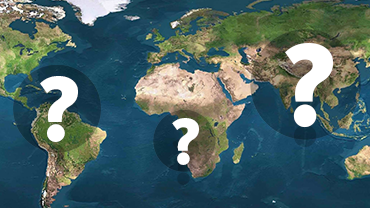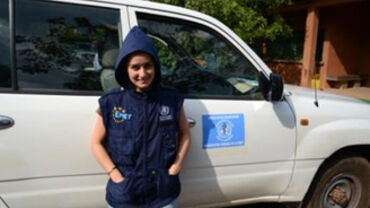Epidemiological update: Outbreak of Ebola Virus Disease in West Africa, 1 July 2014
New cases are still notified in the past four weeks despite efforts to control the outbreak. WHO and international organizations are closely supporting the Ministry of Health of Guinea (MOH Guinea), Ministry of Health & Social Welfare of Liberia (MOHSW Liberia) and Ministry of Health and Sanitation of Sierra Leone (MOHS Sierra Leone) in their EVD prevention, contract tracing, health care and control related activities.
An outbreak of Ebola Virus Disease (EVD) is still evolving in Guinea, Sierra Leone and Liberia since December 2013. The first cases were reported from Guéckédou prefecture, a forested region of south-eastern Guinea near the border with Liberia and Sierra Leone. After a decrease in the number of cases in April 2014, a further increase of cases and deaths was observed in the three countries in May 2014.
Over the last four weeks, there have been newly affected districts with a significant increase in the number of reported cases and deaths of EVD. Twenty two new cases reported from June 25 to June 30. As of 30 June 2014, the total cumulative number of cases reported was 759, including 467 deaths, making this EVD outbreak the worst ever recorded in terms of geographical spread and overall number of cases and deaths reported.
Current situation
Guinea - As of 30 June, WHO Afro reported 413 cases (293 confirmed, 88 probable, and 32 suspected) and 303 deaths. Liberia - As of 30 June 2014, the cumulative number of EVD cases is 107 (43 laboratory confirmed cases) of which 65 were fatal. A total of nine cases among health care workers is reported including five deaths. According to UNICEF, Foya (Lofa county) and New Kru Town (Montserrado county) are currently the main epicentres of this EVD outbreak in Liberia.Sierra Leone - According to WHO on 30 June, 239 cases (199 confirmed, 31 probable, and 28 suspected) and 99 deaths among the confirmed cases were reported.
The table below is presenting epidemiological situation in the three countries:
Table: Overview of EVD case and death number in Guinea, Liberia and Sierra Leone (as of 30 June 2014)
| Country | EVD cases and deaths between 25-30 June 2014 |
Total EVD cases * | Confirmed EVD cases | ||||
|---|---|---|---|---|---|---|---|
| Number | % Total | Number | %** | ||||
| Guinea | |||||||
Cases |
3 | 413 | 54.4 | 293 | 70.9 | ||
| Deaths | 5 | 303 | 64.9 | 193 | 63.7 | ||
| Case fatality ratio | 73.4 | ||||||
| Liberia | |||||||
| Cases | 8 | 107 | 14.1 | 52 | 48.6 | ||
| Deaths | 7 | 65 | 13.9 | 33 | 50.8 | ||
| Case fatality ratio | 60.7 | ||||||
| Sierra Leone | |||||||
| Cases | 11 | 239 | 31.5 | 199 | 83.3 | ||
| Deaths | 2 | 99 | 21.2 | 65 | 65.7 | ||
| Case fatality ratio | 41.4 | ||||||
| Total | |||||||
| Cases | 22 | 759 | 100.0 | ||||
| Deaths | 14 | 467 | 100.0 | ||||
| Case fatality ratio | 61.5 | ||||||
*: Total of confirmed, probable and suspect EVD cases ; **: within row percentage. | |||||||
Source: Adapted from WHO (Ebola virus disease, West Africa – update)
Various patterns of transmission were involved in the current EVD outbreak: transmission in rural areas, in peri-urban areas notably in capitals in Guinea (Conakry) and Liberia (Monrovia) and in districts alongside country borders in Guinea, Sierra Leone and Liberia.
Conclusions
New cases are still notified in the past four weeks despite efforts to control the outbreak. WHO and international organizations are closely supporting the Ministry of Health of Guinea (MOH Guinea), Ministry of Health & Social Welfare of Liberia (MOHSW Liberia) and Ministry of Health and Sanitation of Sierra Leone (MOHS Sierra Leone) in their EVD prevention, contract tracing, health care and control related activities.
According to the second peak of EVD cases and related deaths in the three countries since late May, WHO is concerned of cross-border transmission into neighbouring countries. Considering the current event as sub-regional crisis requiring actions by Governments and partners, WHO is organizing an international meeting of the Ministers of Health of eleven countries and partners involved in the Ebola outbreak response in Accra, Ghana from 2-3 July 2014. The meeting aims to establish a comprehensive inter-country operational response plan to interrupt the further spread of the disease in the shortest possible time.
A strong effort is currently on-going to promote cross-border collaboration and information sharing of suspected cases and contacts in line with WHO guidelines and to mobilise all sectors to ensure high level of social mobilization including key stakeholders (traditional leaders, politicians) and community health workers. A better understanding of the disease and involvement of members of the community, avoiding the myths and misconceptions around EVD, is expected to improve early case reporting and support prevention and control measures.
The risk of infection for travellers visiting Guinea, Liberia and Sierra Leone is considered very low. Most human infections result from direct contact with bodily fluids or secretions from an infected human, and the highest risks of infection are associated with caring for infected patients, particularly in hospital settings, unsafe medical procedures, including exposure to contaminated medical devices, such as needles and syringes and unprotected exposure to contaminated bodily fluids.
As of 1 July 2014, WHO does not recommend any travel or trade restrictions be applied to Guinea, Liberia, or Sierra Leone based on the current information available for this event.
ECDC continues to monitor closely information on the situation on Ebola outbreak in the West Africa region. The conclusions of the assessment provided in the ECDC rapid risk assessment (RRA) on the 11 June 2014 remain valid.
Related links
ECDC Rapid Risk Assessment: Outbreak of Ebola virus disease in West Africa, 9 June 2014







